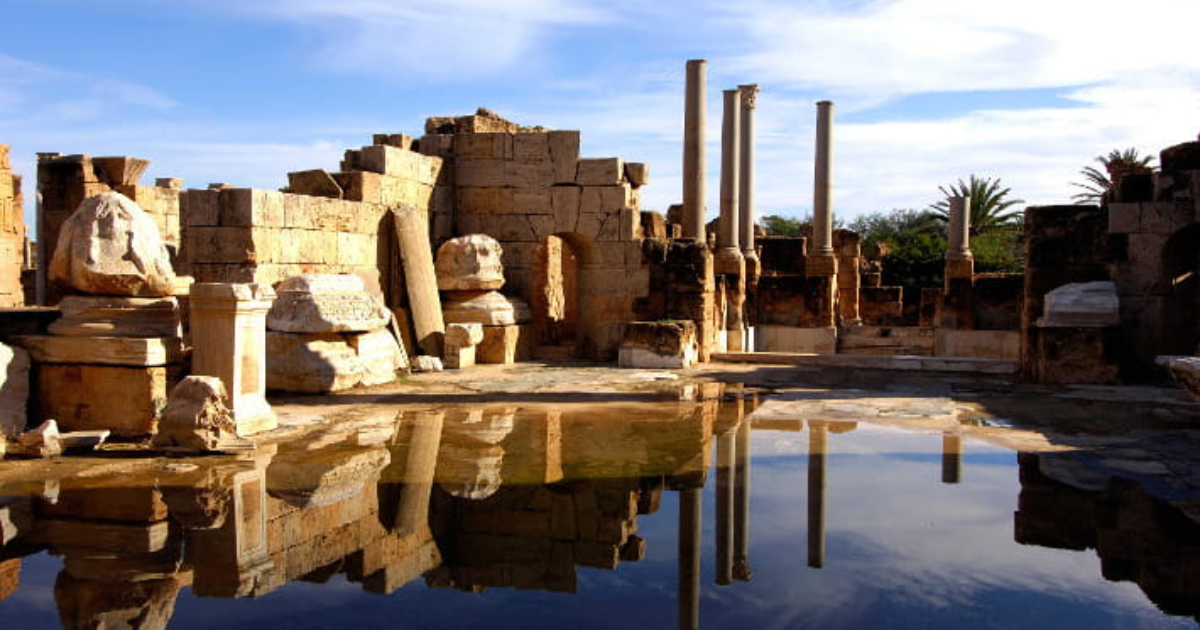"Violence is not love", the caged heart of Fiumicino
Currently, there is a huge, caged heart in Fiumicino, and it is the work of Anna Rizzo that everyone can see these days in the large square of the town hall. Have you […]
Loading...

In the archaeological site of Leptis Magna in Libya, there are the Hunters’ Thermal Baths, built during the Empire of Hadrian and a wonderful testimony of the Roman presence in this suggestive corner of the Mediterranean Sea.
The Baths of Hadrian are located in the archaeological site of Leptis Magna in Libya, a complex built in the 2nd century AD. and used for almost three centuries, becoming one of the major aggregation points of the place. The arrival of water and the use of marble in the African city prompted the emperor to commission the work.
The baths consist of a series of rooms with barrel vaults carved into the sandstone. They retain mosaics and frescoes, one of which is located in the frigidarium which depicts hunting scenes set in the amphitheatre that gave the complex its name.
The spa is accessible from the gym, from which you pass through the entrance hall, a room with a floor covered with marble and mosaics in which there is an outdoor swimming pool surrounded by columns on three sides.
Once you get past the entrance, you find yourself in front of the frigidarium, the cold bath room, one of the most beautiful architectural works in the city. It is a huge room with a marble floor, eight massive columns almost 9 meters high that support a vaulted ceiling, decorated with blue and light blue mosaics, of which, however, nothing remains today. Along the walls you can see the niches inside which 40 statues were originally placed, some of which are now preserved in the museums of Leptis and Tripoli.
To the south of the frigidarium is the tepidarium, the room used for the warm bath and around it, the rooms of the caldarium open up, along with the hot bath room, facing south. Outside the southern walls there were the furnaces used to heat the water. Many of the smaller rooms, on the other hand, were the apodyteria, that is, the changing rooms.
The ruins of the ancient city, which was founded by the Phoenicians around 1000, are located on the shores of the Mediterranean Sea. Here, the Emperor Seventh Severus, who united Carthaginian and Roman blood by reconciling two peoples who had been rivals for centuries, was born. In fact, in the complex, there are many monuments that celebrate him, such as the arch dedicated to him.
The city boasted one of the most impressive lighthouses in the Mediterranean, which is no longer visible today. Temples, the forum used for the market, and the amphitheatre are other splendid testimonies of the Roman presence in this suggestive corner of Libya, making it a UNESCO heritage site since 1982.
Currently, there is a huge, caged heart in Fiumicino, and it is the work of Anna Rizzo that everyone can see these days in the large square of the town hall. Have you […]
The Goddess of snakes, Angizia, gave rise to a pagan cult handed down from literary sources such as the Aeneid and of which we have remains of in some villages of the Marsica […]
The Rhinoceros Gallery in Rome hosts the exhibition Picasso, arriving with a painting never exhibited in the capital. This exhibition takes you on a path that combines dance and music along with the […]
The Ludi Taurei Quinquennales were horse races that took place in the Campo Marzio at the end of June and were created in honour of the Lords of the underworld: here is all […]
What A Wonderful World is an interactive exhibition that can be visited at the MAXXI in Rome, with works by 12 artists who wonder about the problems of the present and the hopes […]
At the Galleria Borghese in Rome, you can visit the exhibition Dialogues of nature and Love, dedicated to Titian, which brings together some of the main masterpieces of one of the most important […]
